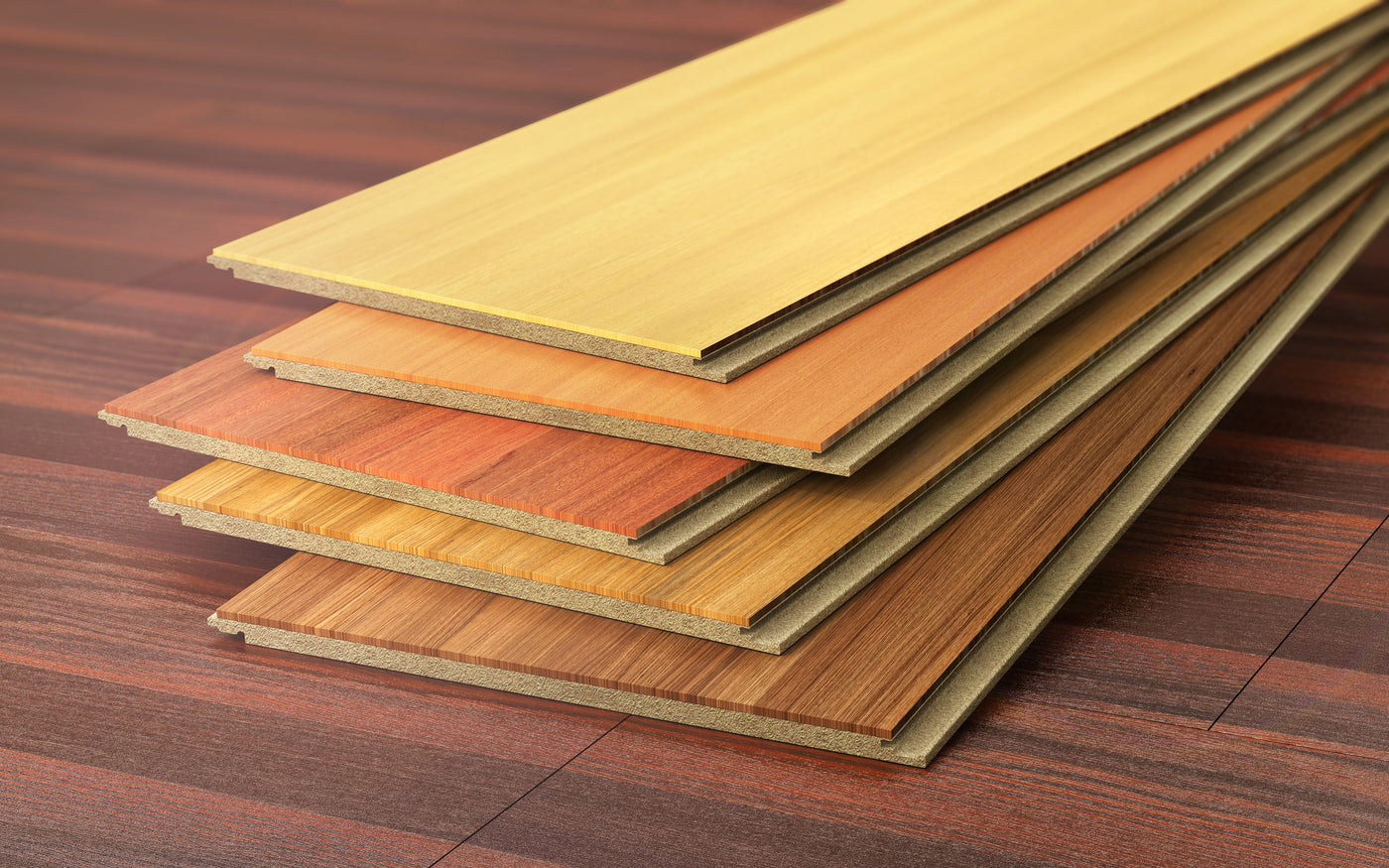Your Cart is Empty

Solid hardwood flooring is fabricated from 100% natural wood. Engineered wood is constructed from layers of wood, bonded together with adhesives under intense heat and pressure. While both types of flooring are essentially made of wood, they yield different results in texture, composition, and overall performance.
Below is a simple chart that highlights the basic differences between solid and engineered wood flooring.
|
|
Solid |
Engineered |
Materials |
Solid hardwood. Examples include pure Oak, Hickory, Walnut, Pine, & Cherry. |
Manufactured by binding strands, particles, or planks of wood, together with adhesives, or other methods to form composite materials. The core is mostly composed of birch and pine, this is because softer woods don’t expand and contract as much as hard woods. |
Dimensions |
3/4-inch thick and width range 1 ½ inches to 5 inches. Anything more than 5 inches wide is not recommended or cost-efficient. |
3/8-inch to 3/4-inch thick, and range from 3 inches wide -15 inches wide. |
Sanding/ Refinishing |
Solid wood can undergo sanding and refinishing several times throughout its life before the structural integrity starts to break down. |
Engineered wood can undergo light sanding once or twice. Sanding should be performed by a professional, as the upper layer is delicate and depending on the wear layer of the product some engineered wood should not be sanded at all. |
Method of Installation |
Nail or staple to sub-flooring |
Staple, nail, fold-and-lock, or glue depending on the product |
Longevity/ Durability |
Solid wood floors can last over 100 years with ongoing care & maintenance. However, solid wood needs to remain at .6 moisture content and environment relative humidity must be between 30-50%. Flooding can destroy the wood instantly. |
Engineered wood is designed to withstand moisture and humidity better than solid wood. It needs to remain at .6 moisture content and environment relative humidity must be between 30-50%. However, it can become chipped or suffer from loose layering if subjected to extreme conditions. |
Hardness |
Several hardwoods, such as Oak, Hickory, Pine, Walnut, and Maple, score at least 1,000 or above on the Janka Hardness Scale. They are hard enough to withstand daily use in a residential or commercial setting as long as they are not exposed to moisture. |
Engineered compression rate is always softer than solid. Engineered hardwoods include Birch, Maple, and Walnut. Softer hardwoods, such as pine, are not typically used for the top layer of engineered hardwoods but are used in the core. |
Best Applications |
● Living areas ● Bedrooms ● Hallways ● Dining rooms ● Bathrooms ● Kitchens
If you decide to use solid wood in the kitchen, then place water-resistant mats over the flooring near the sink or dishwasher. |
● Kitchens ● Bathrooms ● Living areas ● Bedrooms ● Hallways ● Dining rooms
As with solids wood, place mats near the sink or dishwasher if you install engineered hardwood in the kitchen. You can install engineered hardwood in the basement if the area is properly sealed from any water leaks in the walls or pipes. |
The answer to that question ultimately depends on your preference, the purpose of the flooring, your budget, and where you install the hardwood or engineered wood in your home.
If you prefer solid wood in your home, you’ve made a great choice. If you prefer engineered wood, take into consideration the activity in your household. Whether you choose solid wood or engineered wood, you will enjoy the benefits of either. Both offer an array of designs, colors, and textures that will suit any style.
Are you looking for the perfect flooring to complete your home design? eHardwoods offers engineered wood flooring, solid prefinished wood flooring, vinyl plank flooring, and vinyl tile flooring through our eCommerce store.
To find our more about our products or order your flooring, visit our products page.